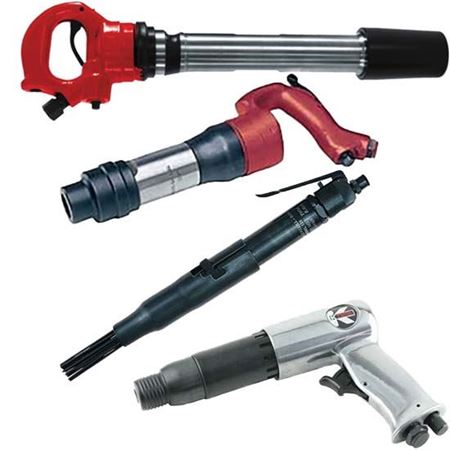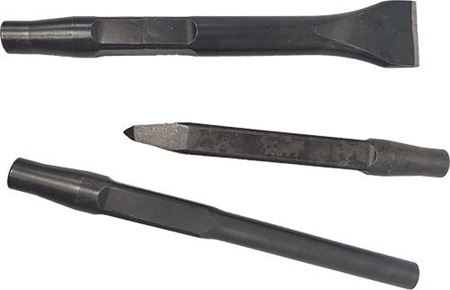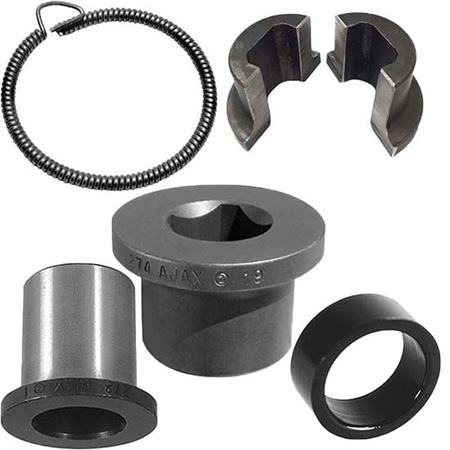Rivet Busters | Tools | Accessories
A rivet buster, also known as a rivet gun or pneumatic rivet hammer, is a handheld pneumatic tool used in construction and metalworking industries. It is primarily designed for the removal of rivets, bolts, and other fasteners from metal structures. The tool operates by delivering powerful blows to the head of the rivet or fastener, effectively breaking it or loosening it from the material it is securing.
Key Features & Components of Rivet Busters:
Pneumatic Power Source: Rivet busters are powered by compressed air, which is supplied through an air hose connected to the tool. This pneumatic power allows for high impact force.
Piston Mechanism: Inside the rivet buster, there is a piston that moves back and forth rapidly when air is applied. This piston is responsible for delivering the blows to the fastener.
Chisel Bit: The front end of the rivet buster has a chisel-like bit that comes in various shapes and sizes, depending on the specific application. The chisel bit is placed on the head of the rivet or fastener to be removed.
Trigger or Valve: A trigger or valve on the tool allows the operator to control the airflow and, consequently, the tool's operation. Squeezing the trigger or actuating the valve causes the piston to move and deliver blows to the fastener.
Rivet busters are commonly used in industries such as metal fabrication, shipbuilding, bridge construction, and demolition. They are effective for tasks like breaking apart metal structures, removing old rivets during maintenance or repair work, and disassembling heavy machinery.
It's important to note that while rivet busters are powerful and efficient tools, they can be noisy and produce significant vibration. Operators should use appropriate safety gear, such as hearing protection and gloves, when using these tools to protect themselves from potential hazards.





